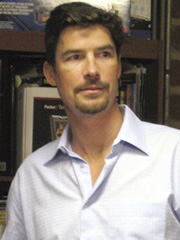Mosaic is an image made of small inlaid pieces of tile, called "Tessera". First developed by the Greeks and Romans around the 4th century B.C., mosaic is a timeless art form with contemporary applications. Until recently, mosaic has suffered from prohibitive costs, long lead times, and design complexities particularly for large scale or high volume commercial property development.
Lately the mosaic medium has become far more accessible, making it an option worth considering for commercial and residential applications. Four main contributing factors have brought this about, to the benefit of developers, architects, designers and builders.
First, a competitive global supply chain makes high quality tile - in ceramic, glass, stone and other exotic materials - readily available. The benefit to buyers is increased variety, lower costs, shorter lead times, and multiple redundant suppliers.
Technology has also changed the industry, which now has access to computer aided design methods and robotic manufacturing processes. Today architects use Computer Aided Design (CAD) to design buildings, builders fabricate building components using Computer Aided Manufacturing (CAM), and components are shipped on-site for bolt together assembly. Similarly it is now possible to design your mosaic on a computer, manufacture it by robot, and have a "prefabbed" mosaic installed in one tenth the time and half the cost.
Modern mosaic companies currently operate as efficient design/build firms. Project quotations can be generated in near real time, accompanied by short lead times on design concepts and materials samples. Projects are delivered under contract reliably and within time & budget constraints. Lifetime libraries of your design enable guaranteed color matched repairs forever.
Finally, tile has always been an extremely sustainable surface finish. For over 3,000 years tile has been selected as a high-end, artistic surface finish for its low strain on natural resources, its durability, and ease of cleaning. In fact, Tile Council of North America's analysis of the primary surface finish options ranks tile as the most cost effective and sustainable option over the life cycle of a building. Tile contributes significantly to LEED 2009 building certification.
Tile mosaic is now more accessible than ever. Affordable high quality tile, efficient design & production technologies, reliable firms and sustainability all make mosaic worth considering in your next project.
Ted Acworth, MBA, PhD, is Founder and CEO Artaic-Innovative Mosaic, 21 Drydock Ave., Boston, MA, 631-793-7348, www.artaic.com
Tags:







